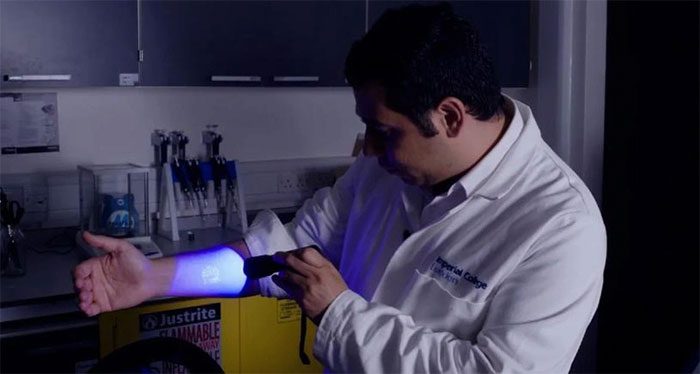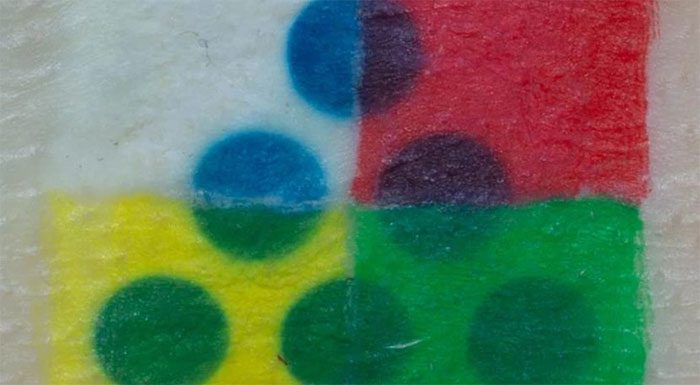Researchers are developing smart tattoos to monitor human health.
Tattoos are one of the oldest forms of art, dating back thousands of years and cherished by many people from diverse cultures.

At the laboratory of the Royal College of London, Ali Yetisen demonstrates a stamp on his arm created with glow-in-the-dark tattoo ink – (Photo: CNN).
Now, the next generation of tattoos is not only art but also a tool for monitoring the health of the wearer.
Color-Changing Tattoos Based on Health
According to CNN, Dr. Ali Yetisen, a researcher at the Department of Chemical Engineering at the Royal College of London (UK), stated that “smart tattoos” can help monitor certain biological markers in the human body.
He replaces conventional tattoo ink with “functional materials” that can produce “color-changing tattoos in response to bodily stimuli.” For instance, for individuals with diabetes, the tattoo will change color when blood sugar levels fluctuate, or it may change color according to kidney or liver function, or warn athletes of dehydration.
Yetisen began his career as a post-doctoral researcher at Harvard Medical School.
Together with researchers from Harvard University and the Massachusetts Institute of Technology (MIT), he launched a project called Dermal Abyss in 2017. Dermal Abyss uses biological sensors via tattoos to extend the skin’s sensory capabilities. This project is a perfect blend of biotechnology and tattoo art.
So far, Yetisen’s technology has been tested on pig skin, with human clinical trials set to be the focus over the next three years.
“Invisible Ink” That Can Hide or Reveal Tattoos

Smart tattoo ink appears as blue dots, activated by UV light during testing at Carson Bruns’ lab in Boulder, Colorado – (Photo: CNN).
While Yetisen’s work and his team’s focus on the internal aspects of the human body, a laboratory led by Dr. Carson Bruns is researching smart tattoos to monitor external factors such as radiation or UV exposure, the leading cause of skin cancer in the United States.
Dr. Bruns, an assistant professor of mechanical engineering at the University of Colorado Boulder, noted that in 2020, his team published a study on a small, light-sensitive tattoo dubbed “Sunspot.”
This is an “invisible” tattoo that will reveal itself upon exposure to UV light.
Currently, no tattoo ink has been approved by the U.S. Food and Drug Administration (FDA), and Bruns’ team is using “medical-grade, non-toxic materials that have long been used in biomedicine” to create smart ink.
Bruns mentioned that his team has developed smart tattoo pigments that can function for at least three years. The tattoos can hide or reveal depending on the light source, meaning that the tattoo will appear when exposed to sunlight.
The tattoo ink technology from the team is currently being commercialized through a startup called Magic Ink.
This project is a collaboration between Dr. Bruns, scientist Jesse Butterfield, and renowned tattoo artist Bang Bang. The presence of the tattoo artist ensures aesthetic factors, alongside the primary purpose of supporting radiation treatment.
Dr. Bruns explained that these small tattoos will help radiation therapists accurately identify treatment locations for millions of radiation therapy patients. However, some patients refuse tattoos as they remind them of the difficult experiences caused by illness.
Bruns was recently awarded a research career grant from the U.S. National Science Foundation, valued at $605,000.



















































